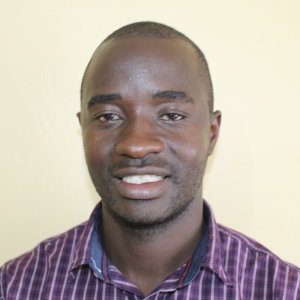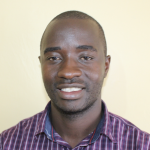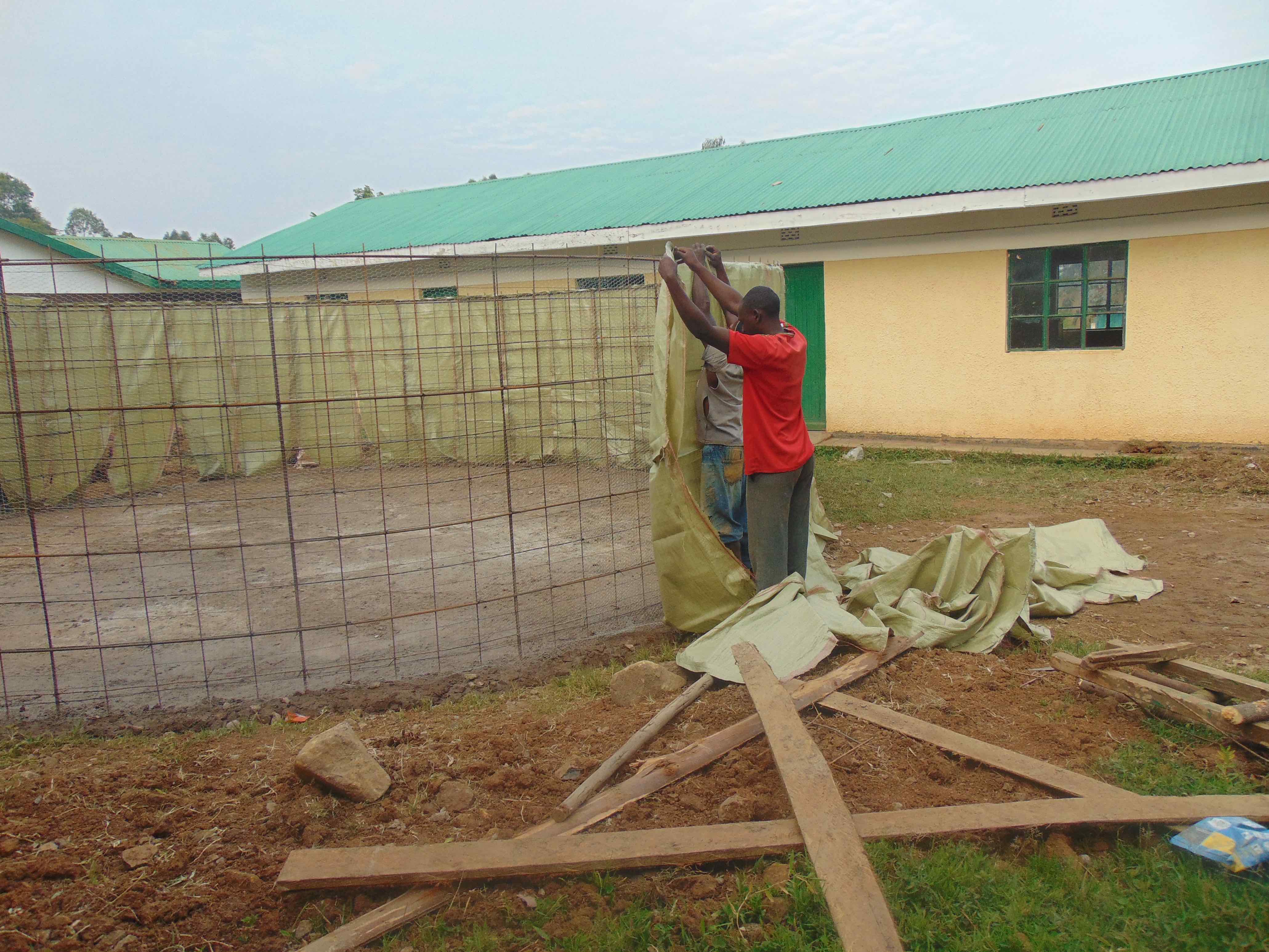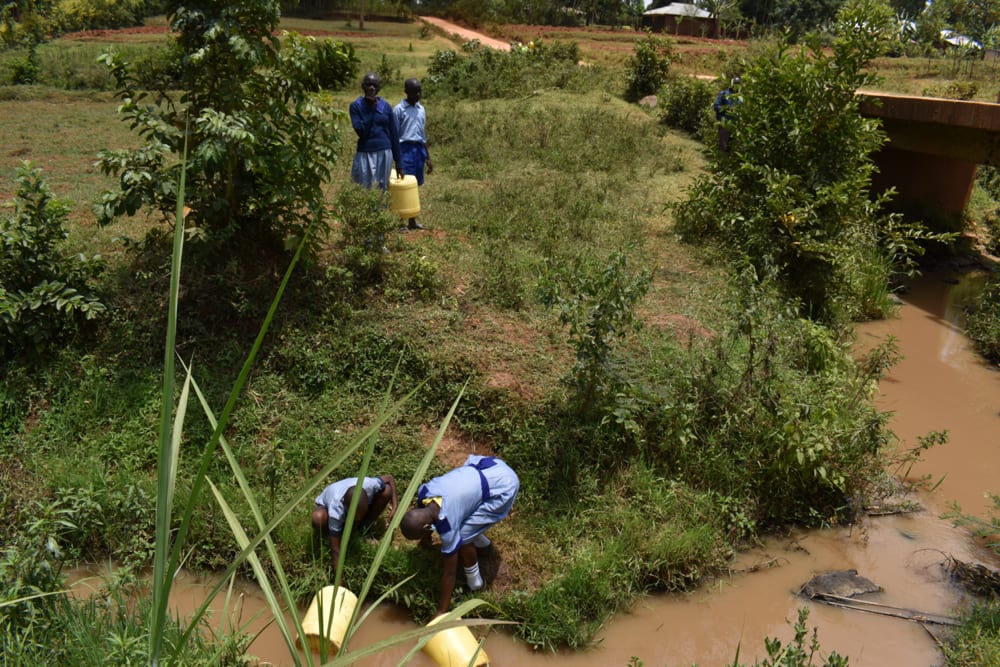"It saddens me to see these students come to me time and again complaining about the difficulties they go through in search of water outside the school compound. Sometimes, girls tell me they cannot bathe as they would wish for fear that the tanks will go dry and that they will have nothing to rely on the next day," said Lilian Ochieng, the Headteacher at Ebukuya Special School for the Deaf.
The 100 students and 18 teachers and staff at Ebukuya Special School for the Deaf face severe daily water shortages that worsen with the dry season each year. As an all-boarding school, the students have particularly high water needs compared to today students; showers, laundry, and all meals need to be provided at school.
There is just one small plastic rain tank on campus that does not last long once the dry season begins. When the tank runs dry, the school has to send students outside the school compound to search for water.
Students rely on off-campus water sources, a protected spring, and surface water such as streams. The students have to cross the road to get to either, which poses a particular danger to them since they cannot hear oncoming traffic.
"I get terribly scared as we cross the road to look for water from the spring. When danger approaches, we cannot easily notice it until we see them. Motorists are my worst fears. Some of them do honk at us, thinking we are hearing. This is a big danger to our lives," explained student Fabian.
The spring is about 500 meters, or one-third of a mile, away from the school. It is seasonal, so each dry season, its yield reduces greatly and sometimes stops altogether. To help reduce the amount of time students spend waiting in line to fetch water at the spring, some will opt to fetch water from the muddy streams that pass through the village. This surface water is unfit for human consumption, but the students are just trying to get back to their classes sooner by fetching it. Students report frequent stomachaches, especially in the dry season, when they rely on these stream sources more frequently.

Ebukuya Special School for the Deaf was established in 2000 with just two semi-permanent structures serving as classrooms. It has since grown to its full boarding school status today. It prides itself on giving its students, who range in age from pre-primary to primary and beyond, equal education opportunities as their hearing agemates. The school is non-financially sponsored by the Roman Catholic Church, which offers students optional spiritual guidance outside of class. The school environment is cool and calm, away from the noise of the town and surrounded by eucalyptus trees.
What We Can Do:
Rain Tank
A 75,000-liter rainwater catchment tank will help alleviate the water crisis at this school. The school will help collect the needed construction materials such as sand, bricks, rocks, and water for mixing cement. We will complement their materials by providing an expert team of artisans, tools, hardware, and the guttering system. Once finished, this tank will begin catching rainfall used by the school’s students and staff for drinking, handwashing, cooking, cleaning, and much more.
The school and we strongly believe that all of these components will work together to improve standards at this school, which will help lead to better student academic performance and unlock the potential for these students to live better, healthier lives.
Handwashing Stations
The student health club will oversee the two new handwashing stations we will provide and ensure they are kept clean and in working condition. The club leaders will fill the handwashing stations with water daily and make sure they are always supplied with a cleaning agent such as soap or ash.
VIP Latrines
Two triple-door latrine blocks will be constructed with local materials that the school will help gather. Three doors will serve the girls, and three doors will serve the boys. These new latrines will have cement floors designed to be easy to use and clean. And with a rain tank right on school property, there should be enough water to keep them clean.
Training on Health, Hygiene, COVID-19, and More
We will hold a one-day intensive training session with students, teachers, and parents. This training will cover a wide range of topics, including COVID-19 symptoms, transmission routes, and prevention; personal and environmental hygiene; and the operation and maintenance of the rain tank, latrines, and handwashing stations. There will be a special emphasis on handwashing.
Our team of facilitators will use various methods to train, including participatory hygiene and sanitation transformation and asset-based community development. We will initiate a student health club, which will prepare students to lead other pupils into healthy habits at school and home. We will also lead lectures, group discussions and provide illustrative handouts to teach health topics and promote good hygiene practices within the school, including handwashing and water treatment. We will then conduct a series of follow-up training before transitioning to our regularly scheduled support visits throughout the year.

 Rainwater Catchment
Rainwater Catchment
 Rehabilitation Project
Rehabilitation Project








































